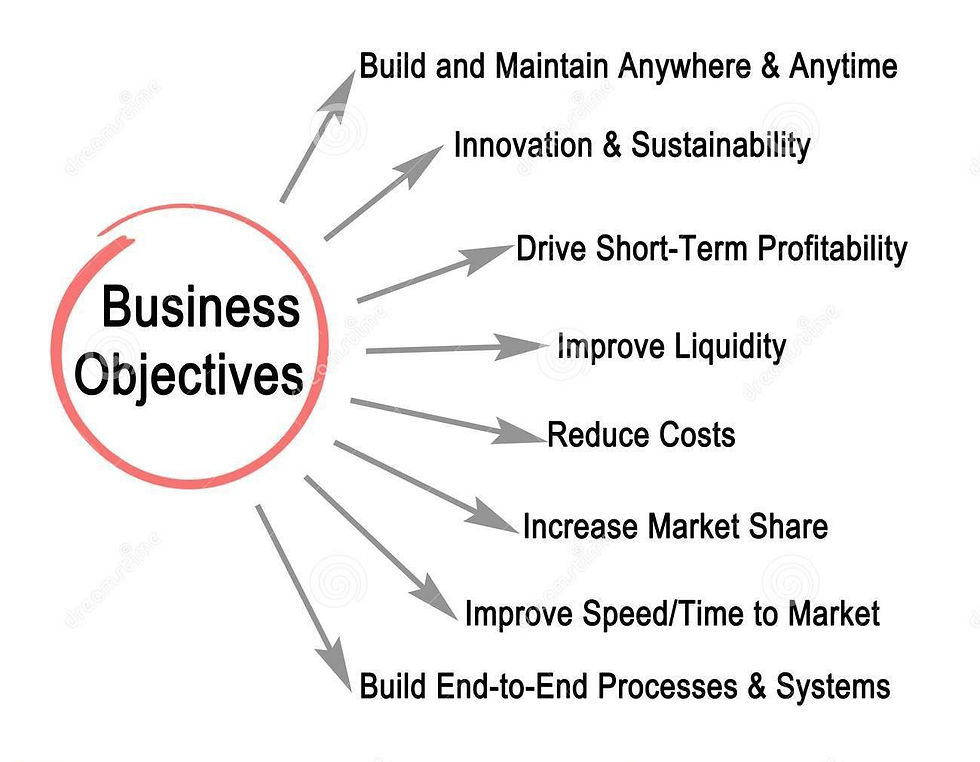Strategizing (8.1)
- Thiago Casarin Lucenti
- Aug 29
- 3 min read
Chapter 8.1 - Business Strategy
Learning Objective: Strategizing (8.1)
Strategy: long-term decisions that will push the business towards its SMART objectives:

Strategic decisions include products, markets, pricing;
Such decisions are made by senior managers/directors;
Strategy provides integration, direction, and focus.
There are four main influences on the formulation of a Corporate Strategy:

Availability of Resources

Resources are scarce/limited;
A good Corporate Strategy makes use of available resources at the best and most efficient possible way.
2. The Business Strengths

A sustainable long-term strategy focuses on the business strengths;
Reinforcing and capitalizing on strong capabilities rather than developing new ones;
Focus on the core business.
3. Competitive Environment

Effective strategies consider competitive pressures;
One of the main reasons for Corporate Strategy failure is lack of competitive environment consideration;
Examples:
- Price reductions;
- Innovations;
- New players.
4. Business Objectives

Objectives heavily impact on Corporate Strategy for obvious reasons;
Examples:
Profit Maximization;
CSR;
Innovation;
Market Share.
Now that we all understand the that strategy is there to guide businesses towards their SMART objectives we can start diving in to the process and tools involved in Strategic Management:

1. Strategic Analysis:
- Understanding the business current situation - where are we now?
- Understanding what may happen in the future;
- How can the external environment impact the business?
Good strategies are based on a throughout analysis of the current and future scenario.
2. Strategic Choice:
- Assessing benefits and limitations of each strategy - problem of choice;
- Good strategies are challenging enough to create competitive advantage;
- The option chosen needs to be affordable and match the available resources.
Although there are tools available for this stage, management experience, skill, and judgement are also important.
3. Strategic Implementation:
Implementing a large strategic change is as important as formulating one;
Implementation is a cross-functional management task.
It requires:
- An appropriate organizational structure to deal with the change;
- Adequate resources to support it;
- Motivated staff who are willing to take on the change;
- Organizational culture and leadership to provide the implementation;
- Control and review systems to monitor the progress towards the desired objectives.
Not every business decision is strategic, though. Strategic decisions are made/supervised by senior level executives. Tactics, on the other hand, are smaller-scale decisions aimed at limited and measurable goals. Tactical decisions are there to support the overall strategic decision:

Activity 8.1
There are different approaches executives use to strategize. We will now look at two of them:
Blue Ocean Strategy
Scenario Planning
1. Starting from the Blue Ocean Strategy:

- Focus on the combination of product differentiation and low-cost;
- It makes the competition irrelevant;
- Explore uncontested markets (blue waters) and leave highly contested ones (red oceans) behind;
- The challenge? Identifying Blue Oceans. A Four Actions Framework helps with that:

- Raise: select factors considered highly important by customers (e.g. customer service);
- Reduce: factors that have raised because of strong competition and can be reduced without negative impacts (e.g. advertising);
- Eliminate: factors that can be wiped-out altogether since they are the basis of existing competition;
- Create: factors that were never offered in the industry and will have high positive impact on demand.

2. Scenario Planning, the second approach to strategizing:

- This approach is based on future potential changes that can impact the business.
- How should our business respond to each different scenario given the fast-changing characteristic of our industry?
- Senior managers identify possible scenarios and discuss strategies to be adopted in the case of each happening;
- Businesses become more flexible to respond changes yet they still have plans for doing so.

To-Do-List
Business In Action 8.1 - Cirque du Soleil
Prepare bullet points for a brief discussion.
Chapter 8.1 - Business Strategy



Comments